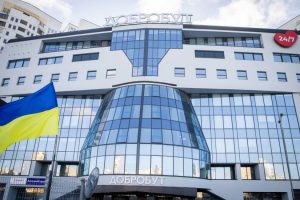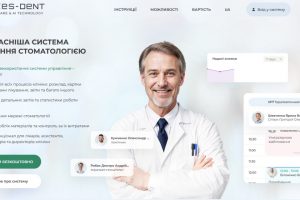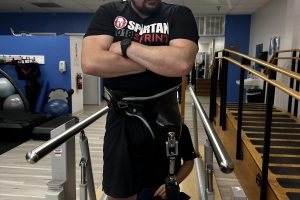Литература:
В основе биологической активности красного перца лежит капсаицин
- Akagi, A., Sano, N., Uehara, H., Minami, T., Otsuka, H. and Izumi, K. (1998), Non-carcinogencity of capsaicinoids in B6C3F1 mice. Food Chem. Toxicol. 36:1065–1071.
- Anand, P. and Bley, K. (2011), Topical capsaicin for pain management: therapeutic potential and mechanisms of action of the new high-concentration capsaicin 8% patch. Br. J. Anaesth. 107:490–502.
- Anandakumar, P., Kamaraj, S., Jagan, S., Ramakrishnan, G., Asokkumar, S., Naveenkumar, C., Raghunandhakumar, S. and Devaki, T. (2012). Capsaicin inhibits benzo(a)pyrene-induced lung carcinogenesis in an in vivo mouse model. Inflamm. Res. 61:1169–1175.
- Arnold, W. P. and van de Kerkhof, P. C. (1993). Topical capsaicin in pruritic psoriasis. J. Am. Acad. Dermatol. 29:438–442.
- Babu, P. S. and Srinivasan, K. (1997). Influence of dietary capsaicin and onion on the metabolic abnormalities associated with diabetes mellitus. Mol. Cell. Biochem. 175:49–57.
- Bartholomew, L. G. and Carlson, H. C. (1994). An unusual case of gastroenteritis. Mayo Clin. Proc. 69:675–676.
- Bernstein, J. E. (1989). Treatment of chronic post-herpetic neuralgia with topical capsaicin. Am. J. Dermatol. 21:265–270.
- Bhat, B. G., Srinivasan, M. R. and Chandrasekhara, N. (1984). Influence of curcumin and capsaicin on the composition and secretion of bile in rats. J. Food Sci. Technol. 21:225–227.
- Bode, A. M. and Dong, Z. (2011). The two faces of capsaicin. Cancer Res. 71:2809–2814.
- Brown, M. and Vale, W. (2011). Effects of neurotensin and substance P on plasma insulin, glucagon and glucose levels. Endocrinology 98:819–822.
- Buiatti, E., Palli, D., Decarli, A., Amadori, D., Avellini, C., Bianchi, S., Biserni R, Cipriani F, Cocco P, Giacosa A. (1989). A case-control study of gastric cancer and diet in Italy. Int. J. Cancer 44:611–616.
- Carpenter, S. and Lynn, B. (1981). Abolition of axon reflex flare in human skin by capsaicin. J. Physiol. (Lond.) 310:69P–70P.
- Caterina, M. J., Schumacher, M. A., Tominaga, M., Rosen, T. A., Levine, J. D. and Julius, D. (1997). The capsaicin receptor: a heat-activated ion channel in the pain pathway. Nature 389:816–824.
- Cazana, F. J. D., Puyol, M. R., Caballero, J. P., Jimenez, A. J. and Duarte, A. M. (1990). Effect of dietary hyperlipidemia-hypercholesterolemia on rat erythrocytes. Int. J. Vitam. Nutr. Res. 60:393–397.
- Chanda, S., Sharper, V. A., Hoberman, A. M. and Bley, K. (2006). Developmental toxicity study of pure trans-capsaicin in rats and rabbits. Int. J. Toxicol. 25:205–217.
- Deal, C. L. (1991). Effect of topical capsaicin: A double blind trial. Clin. Therap. 13:383–395.
- Derry, S., Lloyd, R., Moore, R. A. and McQuay, H. J. (2009). Topical capsaicin for chronic neuropathic pain in adults (Review). Cochrane Database of Systematic Reviews Oct. 7(4):. Art. No. CD007393
- Diepvens, K., Westerterp, K. R. and Westerterp-Plantenga, M. S. (2007). Obesity and thermogenesis related to the consumption of caffeine, ephedrine, capsaicin, and green tea. Am. J. Physiol. Regul. Integr. Comp. Physiol. 292:R77–R85.
- Fitzgerald, M. (1983). Capsaicin and sensory neurons– A Review. Pain 15:109–139.
- Fraenkel, L., Bogardus, S. T., Concato, J. and Wittink, D. R. (2004). Treatment options in knee osteoarthritis: The patient’s perspective. Arch. Intern. Med. 164:1299–1304.
- Fujiwake, H., Suzuki, T., Oka, S. and Iwai, K. (1980). Enzymatic formation of capsaicinoid from vanillylamine and iso-type fatty acids by cell-free extracts of Capsicum annuum var. annuum. Agric. Biol. Chem. 44:2907–2912.[Taylor & Francis Online],
- Fuller, R. W., Dixon, C. M. S. and Barnes, P. J. (1985). Broncho-constrictor response to inhaled capsaicin in humans. J. Appl. Physiol. 58:1080–1084.
- Geppetti, P., Nassini, R., Materazzi, S. and Benemei, S. (2008). The concept of neurogenic inflammation. BJU Int. 101:2–6.
- Glinski, W., Glinska-Ferenz, M. and Pierozynska-Dubowska, M. (1991). Neurogenic inflammation induced by capsaicin in patients with psoriasis. Acta Derm. Venereol. 71:51–54.
- Goldfrank, L. R. (ed). (2002). Goldfrank’s Toxicologic Emergencies. 7th ed., McGraw-Hill, New York, p. 1167.
- Govindarajan, V. S. (1986). Capsicum — production, technology, chemistry and quality: chemistry of colour, aroma and pungency stimuli. Crit. Rev. Food Sci. Nutr. 24:245–355.[Taylor & Francis Online],
- Gupta, R. S., Dixit, V. P., Dobhal, M. P. (2002). Hypocholesterolemic effect of the oleoresin of Capsicum annum L. in gerbils (Meriones hurrianae Jerdon). Phytother. Res. 16:273–275.
- Hussain, M. S. and Chandrasekhara, N. (1992.) Effect of curcumin on cholesterol gallstone induction in mice. Indian J. Med. Res. 96:288–291.
- Hussain, M. S. and Chandrasekhara, N. (1993). Influence of curcumin and capsaicin on cholesterol gallstone induction in hamsters and mice. Nutr. Res. 13:349–357.
- Hussain, M. S. and Chandrasekhara, N. (1994a). Biliary proteins from hepatic bile of rats fed curcumin or capsaicin inhibit cholesterol crystal nucleation in supersaturated model bile. Indian J. Biochem. Biophys. 31:407–412.
- Hussain, M. S. and Chandrasekhara, N. (1994b). Effect of curcumin and capsaicin on the regression of pre-established cholesterol gallstones in mice. Nutr. Res. 14:1561–1574.
- Ito, K., Nakazato, T., Yamato, K., Miyakawa, Y., Yamada, T., Hozumi, N., et al. (2004). Induction of apoptosis in leukemic cells by homovanillic acid derivative, capsaicin, through oxidative stress: implication of phosphorylation of p53 at Ser-15 residue by reactive oxygen species. Cancer Res. 64:1071–1078.
- Jancso, G., Kiraly, E. and Jancso-Gabor, A. (1977). Pharmacologically induced selective degeneration of chemosensitive primary neorones. Nature 270:741–743.
- Joe, B. and Lokesh, B. R. (1997). Prophylactic and therapeutic effects of n-3 PUFA, capsaicin & curcumin on adjuvant induced arthritis in rats. J. Nutr. Biochem. 8:397–407.
- Joe, B. and Lokesh, B. R. (1997a). Effect of curcumin and capsaicin on arachidonic acid metabolism and lysosomal enzyme secretion by rat peritoneal macrophages. Lipids 32:1173–1180.
- Kang, J. Y., Yeoh, K. G., Chia, H. P., Lee, H. P., Chia, Y. W., Guan, R. and Yap, I. (1995). Chili protective factor against peptic ulcer? Diges. Dis. Sci. 40:576–579.
- Kawada, T., Suzuki, T., Takahashi, M. and Iwai, K. (1984). Gastrointestinal absorption and metabolism of capsaicin and dihydrocapsaicin in rats. Toxicol. Appl. Pharmacol. 72:449– 456.
- Kawada, T., Hagihara, K. and Iwai, K. (1986). Effects of capsaicin on lipid metabolism in rats fed a high fat diet. J. Nutr. 116:1272–1278.
- Kempaiah, R. K. and Srinivasan, K. (2002). Integrity of erythrocytes of hypercholesterolemic rats during spices treatment. Mol. Cell. Biochem. 236:155–161.
- Kempaiah, R. K. and Srinivasan, K. (2004a). Influence of dietary curcumin, capsaicin and garlic on the antioxidant status of red blood cells and the liver in high-fat-fed rats. Ann. Nutr. Metab. 48:314–320.
- Kempaiah, R. K. and Srinivasan, K. (2004b). Antioxidant status of red blood cells and liver in hypercholesterolemic rats fed hypolipidemic spices. Int. J. Vitam. Nutr. Res. 74:199–208.
- Kempaiah, R. K. and Srinivasan, K. (2005). Influence of dietary spices on the fluidity of erythrocytes in hypercholesterolemic rats. Br. J. Nutr. 93:81–91.
- Kempaiah, R. K. and Srinivasan, K. (2006). Beneficial influence of dietary curcumin, capsaicin and garlic on erythrocyte integrity in high-fat fed rats. J. Nutr. Biochem. 17:471–478.
- Ki, P., Negulesco, J. A. and Murnane, M. (1982). Decreased total serum myocardial and aortic cholesterol levels following capsaicin treatment. IRCS Med. Sci. 10:446–447.
- Kim, C. S., Kawada, T., Kim, B. S., Han, I. S., Choe, S. Y., Kurata, T. and Yu, R. (2003). Capsaicin exhibits anti-inflammatory property by inhibiting IkB-a degradation in LPS-stimulated peritoneal macrophages. Cell Signal. 15:299–306.
- Kissin, I. (2008) Vanilloid-induced conduction analgesia: Selective, dose-dependent, long-lasting, with a low level of potential neurotoxicity. Anesthesia Analgesia 107:271–281.
- Knotkova, H., Pappagallo, M. and Szallasi, A. (2008). Capsaicin (TRPV1 Agonist) therapy for pain relief: farewell or revival? Clin. Pain 24:142–154.
- Kogure, K., Goto, S., Nishimura, M., Yasumoto, M., Abe, K., Ohiwa, C., et al. (2002). Mechanism of potent antiperoxidative effect of capsaicin. Biochim. Biophys. Acta 1573:84–92.
- Lee, S. D. (1963). Studies on the influence of diets & lipotropic substances upon the various organs and metabolic changes in rabbits on long term feeding with red pepper. III Metabolic and hematologic changes. Korean J. Intern. Med. 6:708–730.
- Lee, C. Y., Kim, M., Yoon, S. W. and Lee, C. H. (2003). Short-term control of capsaicin on blood and oxidative stress of rats in vivo. Phytother. Res. 17:454–458.
- Lee, S. H., Krisanapun, C. and Baek, S. J. (2010). NSAID-activated gene-1 as a molecular target for capsaicin-induced apoptosis through a novel molecular mechanism involving GSK3beta, C/EBPbeta and ATF3. Carcinogenesis 31:719–728.
- Lejeune, M. P. G., Eva, M., Kovacs, M. R., Westerterp-Plantenga, M. S. (2003). Effect of capsaicin on substrate oxidation and weight maintenance after modest body-weight loss in human subjects. Br. J. Nutr. 90:651–659.
- Lewis, R. J. Sr. (ed) (2004). Sax’s Dangerous Properties of Industrial Materials. 11th ed., Wiley-Interscience, Wiley & Sons, Inc., Hoboken, NJ, p. 690.
- Liang, Y. T., Tian, X. Y., Chen, J. N., Peng, C., Ma, K. Y., Zuo, Y., Jiao, R., Lu, Y., Huang, Y. and Chen, Z. Y. (2013). Capsaicinoids lower plasma cholesterol and improve endothelial function in hamsters. Eur. J. Nutr. 52:379–388.
- Liu, N. C., Hsieh, P. F., Hsieh, M. K., Zeng, Z. M., Cheng, H. L., Liao, J. W. and Chueh, P. J. (2012). Capsaicin-mediated tNOX (ENOX2) up-regulation enhances cell proliferation and migration in vitro and in vivo. J. Agric. Food Chem. 60:2758–2765.
- López-Carrillo, L., López-Cervantes, M., Robles-Díaz, G., Ramírez-Espitia, A., Mohar-Betancourt, A., Meneses-García, A., et al. (2003). Capsaicin consumption, Helicobacter pylori positivity and gastric cancer in Mexico. Int. J. Cancer 106:277–282.
- Majid, M., Badmaev, V., Lakshmi, P., Natarajan, S. and Gopinathan, S. (1997). Capsaicin, the Antiarthritic Phytochemical. Nutriscience Publishers Inc., USA.
- Manjunatha, H. and Srinivasan, K. (2008). Hypolipidemic and antioxidant potency of heat processed turmeric and red pepper in experimental rats. Afr. J. Food Sci. 2:1–6.
- McCarthy, G. M. and McCarthy, D. J. (1991). Effect of topical capsaicin in the therapy of painful osteoarthritis of the hand. J. Rheumatol. 19:604–607.
- Monsereenusorn, S. (1983). Subchronic toxicity studies of capsaicin and capsicum in rats. Res. Comm. Chem. Pathol. Pharmacol. 41:95–100.
- Mori, A., Lehmann, S., O’Kelly, J., Kumagai, T., Desmond, J. C., Pervan, M., et al. (2006). Capsaicin, a component of red peppers, inhibits the growth of androgen-independent, p53 mutant prostate cancer cells. Cancer Res. 66:3222–3229.
- Muralidhara, and Narasimhamurthy, K. (1988). Non-mutagenicity of capsaicin in albino mice. Food Chem. Toxicol. 26:955–958.
- Naidu, K. A. and Thippeswamy, N. B. (2002). Inhibition of human low density lipoprotein oxidation by active principles from spices. Mol. Cell. Biochem. 229:19–23.
- Negulesco, J. A., Young, R. M. and Ki, P. (1983). Capsaicin lowers plasma cholesterol and triglycerides of lagomorphs. Artery 12:301–311.
- Negulesco, J. A., Noel, S. A., Newman, H. A., Naber, E. C., Bhat, H. B. and Witiak, D. T. (1987). Effects of pure capsaicinoids (capsaicin and dihydrocapsaicin) on plasma lipids and lipoprotein concen-trations of turkey poults. Atherosclerosis 64:85–90.
- Okada, Y. and Okajima, H. (2001). Antioxidant effect of capsaicin on lipid peroxidation in homogeneous solution, micelle dispersions & liposomal membranes. Redox. Rep. 6:117–122.[Taylor & Francis Online],
- O’Neil, M. J. (ed.) (2001). The Merck Index — An Encyclopedia of Chemicals, Drugs and Biologicals. 13th ed., Whitehouse Station, NJ: Merck and Co., Inc., p. 296.
- Pande, S. and Srinivasan, K. (2012). Potentiation of hypolipidemic and weight reducing influence of dietary tender cluster bean (Cyamopsis tetragonoloba) by capsaicin in high-fat fed rats. J. Agric. Food Chem. 60:8155–8162.
- Park, J. S., Choi, M. A., Kim, B. S., Han, I. S., Kurata, T. and Yu, R. (2000). Capsaicin protects against ethanol-induced oxidative injury in the gastric mucosa of rats. Life Sci. 67:3087–3093.
- Philip, G., Baroody, F. M., Proud, D., Naclerio, R. M. and Togias, A. G. (1994). The human nasal response to capsaicin. J. Allergy Clin. Immunol. 94:1035–1045.
- Platel, K. and Srinivasan, K. (1996). Influence of dietary spices or their active principles on digestive enzymes of small intestinal mucosa in rats. Int. J. Food Sci. Nutr. 47:55–59.[Taylor & Francis Online],
- Platel, K. and Srinivasan, K. (2000). Influence of dietary spices or their active principles on pancreatic digestive enzymes in albino rats. Nahrung 44:42–46.
- Platel, K. and Srinivasan, K. (2001). Studies on the influence of dietary spices on food transit time in experimental rats. Nutr. Res. 21:1309–1314.
- Poller, B. S. and Cacroix, J. S. (1993). Capsaicin at the work place. Allergy 48:550.
- Prakash, U. N. S. and Srinivasan, K. (2010). Beneficial influence of dietary spices on the ultra structure and fluidity of intestinal brush border in experimental rats. Br. J. Nutr. 104:31–39.
- Prakash, U. N. S. and Srinivasan, K. (2012a). Fat digestion and absorption in spice pretreated rats. J. Sci. Food Agri. 92:503–510.
- Prakash, U. N. S. and Srinivasan, K. (2012b). Enhanced intestinal uptake of trace minerals in spice pretreated rats. J. Trace Elem. Med. Biol. 27:184–190.
- Prasad, N. S., Raghavendra, R., Lokesh, B. R. and Naidu, K. A. (2004). Spice phenolics inhibit human PMNL 5-lipoxygenase. Prostagl. Leukotr. Essent. Fatty Acids 70:521–528.
- Razavi, R., Chan, Y., Afifiyan, F. N., Liu, X. J., Wan, X., Yantha, J., et al. (2006). TRPV1 +sensory neurons control β-cell stress and islet inflammation in autoimmune diabetes. Cell 127:1123–1135.
- Reddy, A. C. P. and Lokesh, B. R. (1992). Studies on spice principles as antioxidants in the inhibition of lipid peroxidation of rat liver microsomes. Mol. Cell. Biochem. 111:117–124.
- Reddy, A. C. P. and Lokesh, B. R. (1994). Studies on anti-inflammatory activity of spice principles and dietary n-3 polyunsaturated fatty acids on Carrageenan induced inflammation in rats. Ann. Nutr. Metab. 38:349–358.
- Reilly, C. A. and Yost, G. S. (2006). Metabolism of capsaicinoids by P450 enzymes: a review of recent findings on reaction mechanisms, bio-activation, and detoxification processes. Drug Metab. Rev. 38:685–706.[Taylor & Francis Online],
- Reilly, C. A., Henion, F., Bugni, T. S., Ethirajan, M., Stockmann, C., Pramanik, K. C., Srivastava, S. K., Yost, G. S. (2013). Reactive intermediates produced from the metabolism of the vanilloid ring of capsaicinoids by P450 enzymes. Chem Res Toxicol. 26:55–66.
- Richeux, R., Cascante, M., Ennamany, R., Sabureau, D. and Creppy, E. E. (1999). Cytotoxicity and genotoxicity of capsaicin in human neuroblastoma cells SHSY-5Y. Arch. Toxicol. 73:403–409.
- Salimath, B. P., Sundaresh, C. S. and Srinivas, L. (1986). Dietary components inhibit lipid peroxidation in erythrocyte membrane. Nutr. Res. 6:1171–1178.
- Sambaiah, K., Satyanarayana, M. N. and Rao, M. V. L. (1978). Effect of red pepper and capsaicin on fat absorption and liver fat in rats. Nutr. Rep. Int. 18:521–529.
- Sambaiah, K. and Satyanarayana, M. N. (1980). Hypocholesterolemic effect of red pepper and capsaicin. Indian J. Exp. Biol. 18:898–899.
- Sambaiah, K., Ratankumar, S., Kamanna, V. S., Satyanarayana, M. N. and Rao, M. V. L. (1982). Influence of turmeric and curcumin on growth, blood constituents and serum enzymes in rats. J. Food Sci. Technol. 19:187–190.
- Satyanarayana, M. N. (2006). Capsaicin and gastric ulcers. Crit. Rev. Food Sci. Nutr. 46:275–328.[Taylor & Francis Online],
- Shubha, M. C., Reddy, R. L. R. and Srinivasan, K. (2011). Anti-lithogenic influence of dietary capsaicin and curcumin during experimental induction of cholesterol gallstone in mice. Appl. Physiol. Nutr. Metab. 36:201–209.
- Srinivasan, K. and Sambaiah, K. (1991). Effect of spices on cholesterol-7α-hydroxylase activity and on serum and hepatic cholesterol levels in the rat. Int. J. Vitam. Nutr. Res. 61:364–369.
- Srinivasan, K., Sambaiah, K. and Chandrasekhara, N. (1992). Loss of active principles of common spices during domestic cooking. Food Chem. 43:271–274.
- Srinivasan, M. R., Sambaiah, K., Satyanarayana, M. N. and Rao, M. V. L. (1980). Influence of red pepper and capsaicin on growth, blood constituents and nitrogen balance in rats. Nutr. Rep. Int. 21:455–467.
- Srinivasan, M. R. and Satyanarayana, M. N. (1987). Influence of capsaicin, curcumin and ferulic acid in rats fed high fat diets. J. Biosci. 12:143–152.
- Srinivasan, M. R. and Satyanarayana, M. N. (1988). Influence of capsaicin, eugenol, curcumin and ferulic acid on sucrose induced hypertriglyceridemia in rats. Nutr. Rep, Int. 38:571–581.
- Story, G. M. and Crus-Orengo, L. (2007). Feel the burn. Am. Scientist, 95:326–333.
- Suresh, D., Manjunatha, H. and Srinivasan, K. (2007). Effect of heat processing of spices on the concentrations of their bioactive principles: turmeric (Curcuma longa), red pepper (Capsicum annuum) and black pepper (Piper nigrum). J. Food Compos. Anal. 20:346–351.
- Suresh, D. and Srinivasan, K. (2010). Tissue distribution and elimination of capsaicin, piperine and curcumin following oral intake in rats. Indian J. Med. Res. 131:682–691.
- Surh, Y. J. and Lee, S. S. (1995). Capsaicin, a double-edged sword: Toxicity, metabolism, and chemo-preventive potential. Life Sci. 56:1845–1855.
- Surh, Y. J., Lee, R. C., Park, K. K., Mayne, S. T., Liem, A. and Miller, J. A. (1995). Chemoprotective effects of capsaicin and diallyl sulfide against mutagenesis or tumorigenesis by vinyl carbamate and N-nitrosodimethylamine. Carcinogenesis 16:2467–2471.
- Surh, Y. J., Kundu, J. K., Na, H. K. and Lee, J. S. (2005). Redox-sensitive transcription factors as prime targets for chemoprevention with anti-inflammatory and antioxidative phytochemicals. J. Nutr. 135(Suppl.):2993S–301S.
- The Capsaicin Study Group. (1992). Effect of treatment with capsaicin on daily activities of patients with painful diabetic neuropathy. Diabetic Care 15:159–165.
- Thomson Micromedex. (2006). Drug Information for the Health Care Professional. 1, Greenwood Village, CO., p. 763.
- Toth, B. and Gannett, P. (1992). Carcinogenicity of lifelong administration of capsaicin of hot pepper in mice. In Vivo 6:59–63.
- Tsui, H., Razavi, R., Chan, Y., Yantha, J. and Dosch, H. M. (2007). Sensing autoimmunity in type 1 diabetes. Trends Mol. Med. 13:405–413.
- Veda, S. and Srinivasan, K. (2009). Influence of dietary spices—Black pepper, red pepper and ginger on the uptake of β-carotene by rat intestines. J. Funct. Foods 1:394–398.
- Veda, S. and Srinivasan, K. (2011). Influence of dietary spices on the in vivo absorption of ingested β-carotene in experimental rats. Br. J. Nutr. 105:1429–1438.
- Westerterp-Plantenga, M. S., Smeets, A. and Lejeune, M. P. G. (2004). Sensory and gastro intestinal satiety effects of capsaicin on food intake. J. Obesity 29:682–688.
- Yoneshiro, T., Aita, S., Kawai, Y., Iwanaga, T. and Saito, M. (2012). Non-pungent capsaicin analogs (capsinoids) increase energy expenditure through the activation of brown adipose tissue in humans. Am. J. Clin. Nutr. 95:845–850.








Комментировать